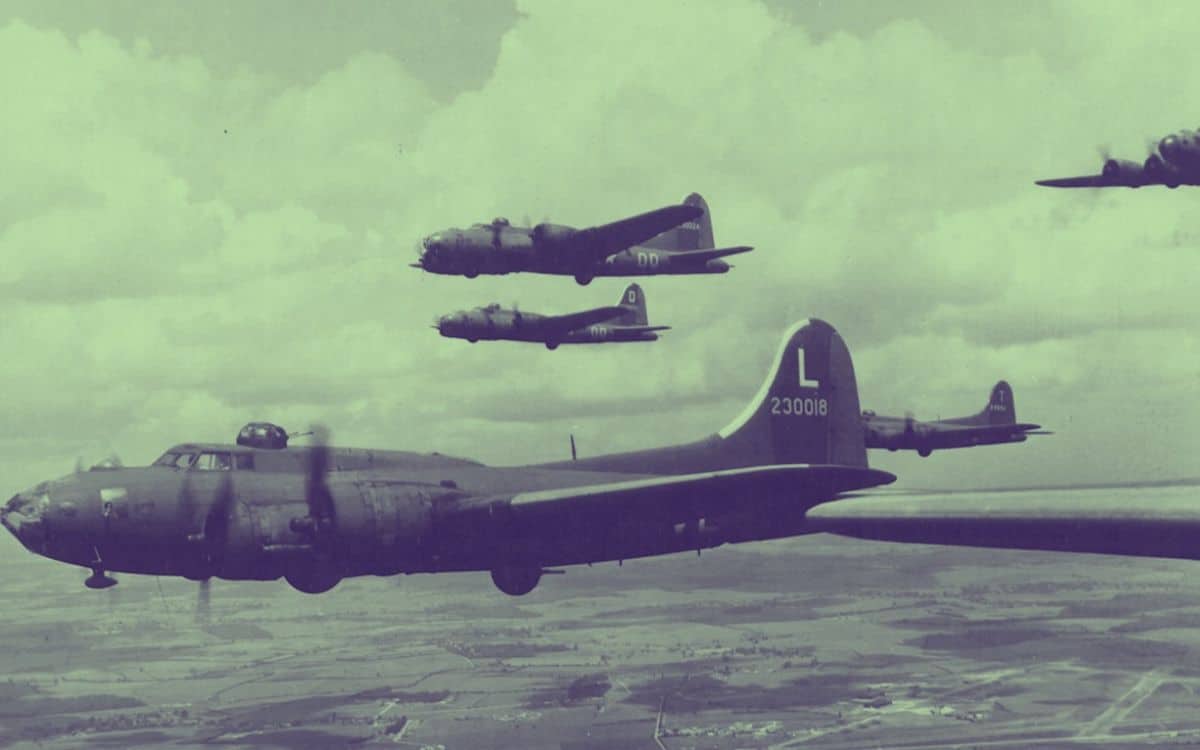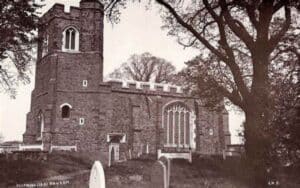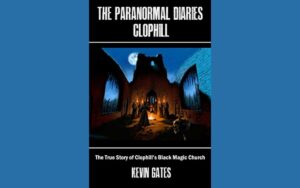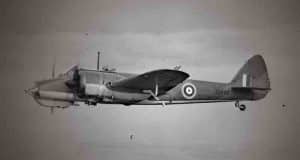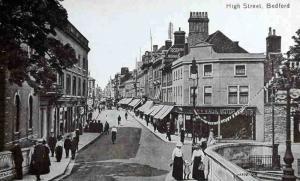Thurleigh’s World War 2 airfield in Bedfordshire has many reported sightings (and smells) of ghostly aircrew, writes DAMIEN O’DELL
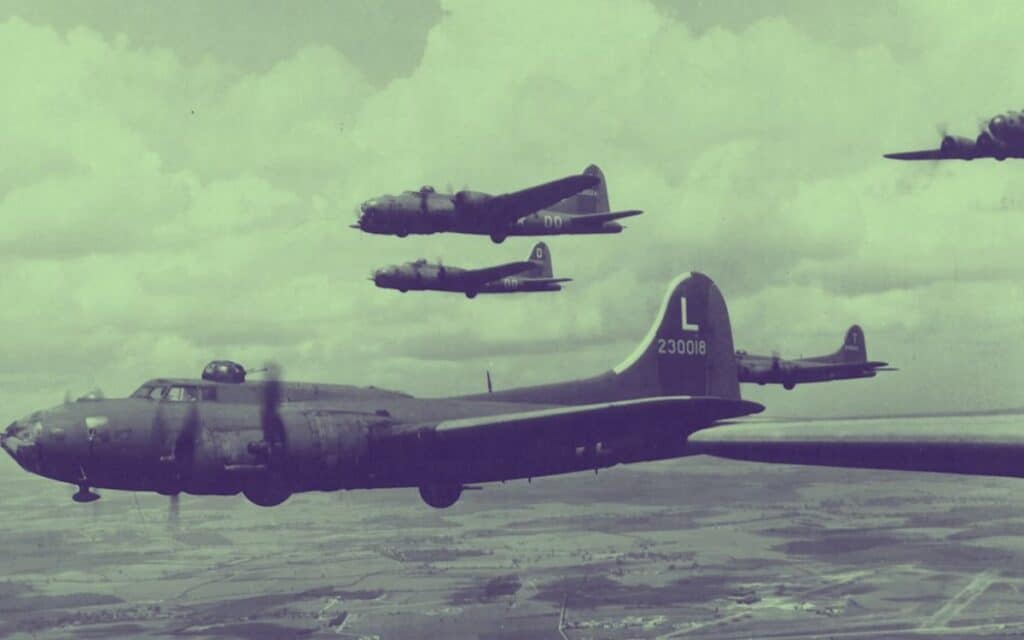
A couple of months ago, I was driving north out of Bedford on the B660 to visit Kimbolton Castle for one of their rare open days. I passed the sign for Thurleigh, where there is a business park, home to a wide variety of businesses.
I recalled that this site had been home to the 306th Bombardment Group during World War Two. The 306th had the distinction of having the longest tenure at a UK base of any American combat unit. They arrived at Thurleigh in September 1942 and departed in December 1945, after its B-17 ‘Flying Fortress’ bombers had completed 342 missions.
Tragically, the 306th also had another distinction: between October 1942 and August 1943, its loss rate was the highest in the Eighth Air Force, totalling over 26,000 men by the end of hostilities. It is, perhaps, unsurprising that this base left many ghostly memories in its wake.
During his 15-month stay at the base, from 1990- 91 Michael Cook was a resident of the RAF Officers’ Mess in Keysoe Road, Thurleigh, accompanied by a few Ministry of Defence civilian staff. They were employed at the Defence Research Agency Tunnel and Airfield Sites and worked with some RAF aircrew in research flying. The buildings they used dated from the Second World War and had been used as administrative quarters by the 40th Combat Wing HQ and the 306th Bombardment Group of the United States Army Air Force (as it was then).
On several occasions, while in bed, Michael heard footsteps in the corridor outside his room. He investigated but never found anyone to account for these sounds. He talked about this with the other residents, to be told, “Oh, yes, didn’t you know that the mess is haunted by a young American airman?”
One evening Michael was in the reading room, and he reported: “The door leading off to the bedrooms slowly opened wide (against its closed spring) and then closed again, with nobody nearby. The hairs stood up on the back of my neck.”
Usually, the Mess remained empty and unstaffed at weekends, but heavy snow in winter 1991 forced Michael to stay over the whole weekend, entirely alone. Once again, he found himself in the reading room when a light bulb fell from its fitting in the high ceiling. It dropped onto the coffee table within several inches of his right hand. ‘It bounced without breaking, and when I recovered from the shock, I felt a very strong sense of someone else’s presence in the room.’
The mess closed not long after Michael left. What remains of the site has become derelict, apart from a sign at the entrance to those who gave their lives fighting with the 306th. Most of those young men died over enemy territory, but some died near their base. On 23rd December two B-17 bombers collided in mid-air over Thurleigh. There were no survivors. Michael wondered sometimes whether the soul he encountered in the Officer’s Mess was one of the airmen killed in that tragic accident, who is still trying to report back for duty.
Ghostly smells at Thurleigh
Can ghostly smells be associated with a haunting? My late friend Keith Paull believed so.
He was an engineer who researched the history of the 306th Bombardment Group for many years as he had worked on the site and was in contact with several Americans who served with the USAAF. They included John Ziarco, the crew chief who maintained the aircraft, which stood on the hardstanding.
During the 1980s, Keith was employed by the Royal Aircraft Establishment, based at Thurleigh, and regularly used the car park, which was formerly a part of the aircraft hardstanding.
On two or three occasions, in the early morning, Keith noticed a very strong smell of frying eggs and bacon. It was localised, being at first strong, then, on the other side of the car, as he crossed the car park there was no trace at all.
Curious, he asked his friend John what it might mean. Ziarco had been responsible for the maintenance of ‘Patches and Prayers’, one of the B-17s from the 423rd Squadron, 306th Bombardment Group.
John told Keith that where the car park was now used to be the spot where, during the war, the ground crews had their mess tents. Once the aircraft were ready, the ground crew retired to their tent and prepared a hearty breakfast, usually bacon and eggs.
The awful tensions suffered by the ground crews were every bit as real as those suffered by the aircrews. Would ‘their’ aircraft return safely? Would any of the crew be injured… or killed? Would something go wrong with the B-17? Would it be as a result of anything the ground crews themselves had overlooked? These were the kinds of sombre thoughts endured by these young American servicemen as they sat down to their morning meal.
Is it possible that these stressful times somehow left an ‘imprint’ which manifested over forty years later – in the form of a paranormal aroma?
During Keith’s time at Thurleigh the airfield was patrolled by Ministry of Defence policemen. One of them shared a story with Keith about haunted huts on the airfield. On dark nights, patrols reported seeing ghostly wartime aircrew playing cards in lighted huts.
As the policemen neared the huts and got around to the front door to check, the huts were once again in darkness and unoccupied. One police dog-handler spotted a man on a bicycle in the half-light of the evening. The cyclist turned off the taxiway and towards a small hangar.
When the guard and his dog rounded the corner, expecting to cut the ‘intruder’ off, there was no sign of either man or bicycle. Where did he go? It would have been completely impossible for any cyclist to have gotten to the hardstanding down the taxiway that the bicycle had taken because a covered connecting way between the hangar and another new building had subsequently been built across it.
John Ziarco identified the cyclist as a young wartime airman who had a premonition that he would be killed. As time went by and he survived more and more deadly missions, he grew ever more psychotic. He remained convinced that ‘his time was up’ but he successfully completed his final mission without mishap. Shortly afterwards, he shot himself – behind the small hangar on the hardstanding where his plane would have stood…
All that remains now of the once mighty airfield is a small museum, the 306th Bomber Group Museum, dedicated to those young airmen who gave their lives for our freedom.
It is housed in the building that was formerly the Small Arms Ammunition Store.
The museum is open on Sundays from April to October this year and admission is free.
When so many men, in their prime of life died sudden, violent deaths, far from home and without the benefit of a respectful funeral, it is small wonder that the last place they knew should be revisited by their restless spirits.
Discover more hauntings at English airfields.
Have you witnessed a haunting at an airfield? Tell us about it in the comments section below!
Damien O’Dell, born in West Kensington, London, has been interested in the unexplained since childhood. He has authored a series of paranormal books including Ghostly Bedfordshire Reinvestigated, Paranormal Bedfordshire, Paranormal Cambridgeshire and Paranormal Hertfordshire. His new book is a a ghostly history of Chicksands Priory. You can find out more at www.damienodell.com

